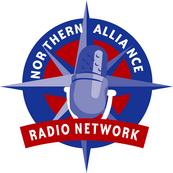Update on western Iraq
I have analysis envy. Bill Roggio has a brilliant post up, summarizing the goals of the various operations in western Iraq.
(Bill also has an update on Iron Fist and River Gate.)
Click on Roggio's map to get a good sense of where forces are deployed.
As Bill says:
(In his post, Bill mentions that the goal of Operation Hiba was to secure control of a railroad bridge in the south of the city. I am thinking that would be this bridge.)
The Belmont Club also has two good posts (here and here) giving an overview of the terrain involved. His posts explain why the open desert is not conducive to terrorist operations. Hence, the terrorists wish to follow the rivers. These operations are all about denying the terrorists the ability to move, group in, and control the major river towns and crossings.
One thing I'll add, you'll see from the map that the eastern anchor of this line of operations is Fallujah. It was the scene of a landmark urban battle last November. It is the eastern anchor today because the II MEF is now there in force, in significant numbers. Any terrorists trying to run the gauntlet of river towns along the western Euphrates will run up against the well-armed US military sitting at the key junction where the fertile river valley starts to widen out.
A good blog that comes out of Camp Fallujah is Live In Iraq. The person writing it gives good details on activities in that area.
When I get this year of grad school behind me, I'll have more time to sit and piece some of this together myself. Till then, hats off to Bill for his great work.
(Bill also has an update on Iron Fist and River Gate.)
Click on Roggio's map to get a good sense of where forces are deployed.
As Bill says:
There are also two bridges in Habbaniyah and two in Fallujah. A look at the map will show the Coalition maintains a strong presence at each and every crossing point. This is no accident. The Coalition has chosen to segment the Euphrates River at cities and towns that possess bridges across the river, and will be on hand to control the crossing points when the time comes to reopen the bridges.
We know the three bridges in and around Haditha have been severed, as well as the bridges out west in Ubaydi. The likelihood is the crossings at Khan al Baghdadi and Hit have been disabled as well, leaving a crossing open in Rawah to the west and Ramadi to the East (note that a goal of Operation Mountaineers was securing a railroad bridge in the south of the city). The Coalition now effectively controls traffic across the Euphrates River. Insurgents and terrorists wishing to transverse the river must now run the river gates established Rawah and Ramadi.
(In his post, Bill mentions that the goal of Operation Hiba was to secure control of a railroad bridge in the south of the city. I am thinking that would be this bridge.)
The Belmont Club also has two good posts (here and here) giving an overview of the terrain involved. His posts explain why the open desert is not conducive to terrorist operations. Hence, the terrorists wish to follow the rivers. These operations are all about denying the terrorists the ability to move, group in, and control the major river towns and crossings.
An examination (speculation alert) of Iraqi topography helps us understand the river and border campaigns better. Global Security has a trafficability map. Rawa is not so coincidentally on the northern limit of riverine Iraq along the Euphrates. It lies between what the US Naval Institutes in its article Military Geography of Iraq calls "Type I" terrain -- desert and steppe -- and "Type II" riverine Iraq. If the Syrian frontier is the "outer border" the "inner border" is the boundary between the Type I and Type II; between the desert and the sown. Riverine Iraq, the area which contains most the nation's population, cities and wealth is the prize; and only by traversing the Type I steppe and desert can the insurgents move from the Syrian border to attack Iraq's heartland. The area northwestward from Rawa to the Syrian border, south to the Jordanian frontier and north across the Euphrates to Mosul are all Type I and it is here where the battle for the borders is being fought. It has two characteristics which make it relatively ideal for as a line of communication for the insurgency. One is trafficability. According to the US Naval Institute article:
"Roads that traverse region I to and from Iraq are few, but that deficiency inhibits military movement much less than elsewhere because the hard, flat surface simplifies cross-country trafficability for wheeled as well as tracked vehicles. The author, for example, long ago journeyed from Damascus to Baghdad by bus, with rare glimpses of any formal route."
One thing I'll add, you'll see from the map that the eastern anchor of this line of operations is Fallujah. It was the scene of a landmark urban battle last November. It is the eastern anchor today because the II MEF is now there in force, in significant numbers. Any terrorists trying to run the gauntlet of river towns along the western Euphrates will run up against the well-armed US military sitting at the key junction where the fertile river valley starts to widen out.
A good blog that comes out of Camp Fallujah is Live In Iraq. The person writing it gives good details on activities in that area.
When I get this year of grad school behind me, I'll have more time to sit and piece some of this together myself. Till then, hats off to Bill for his great work.








0 Comments:
Post a Comment
<< Home